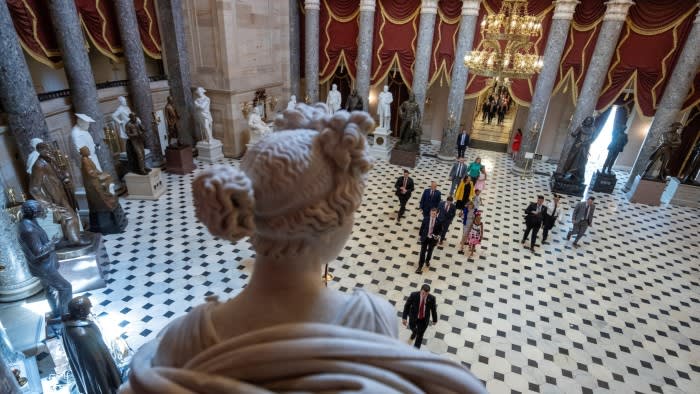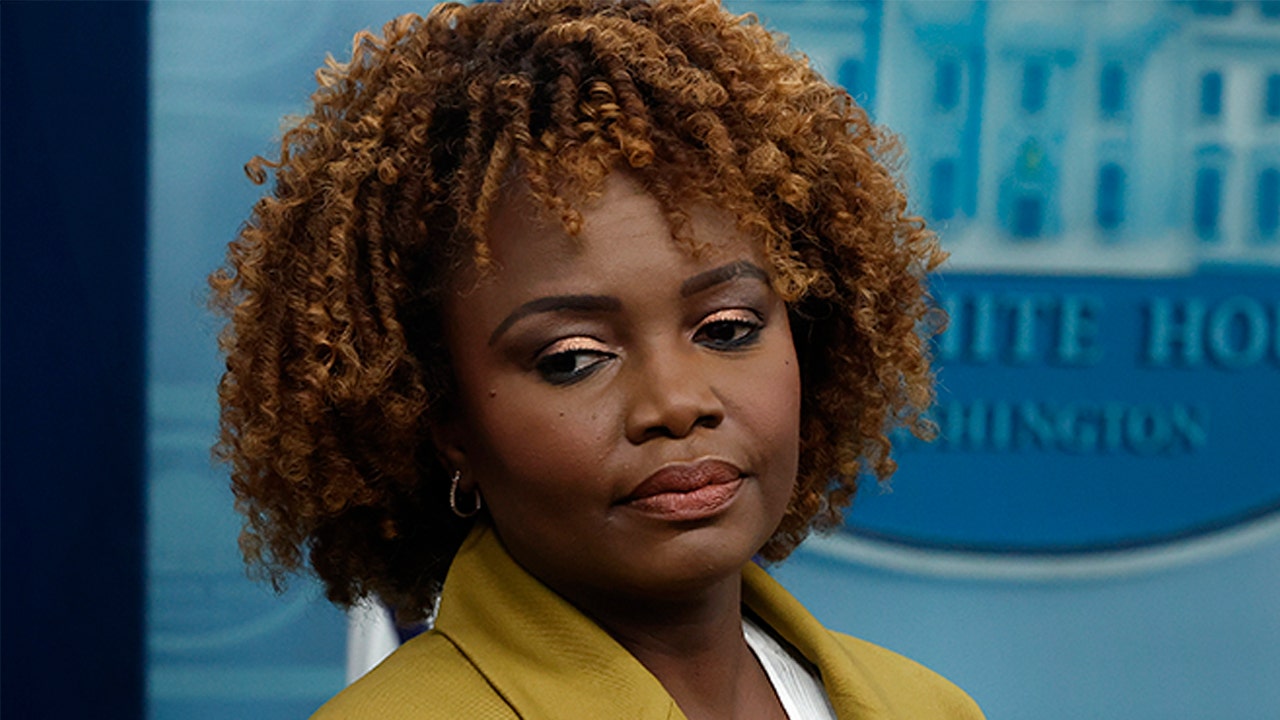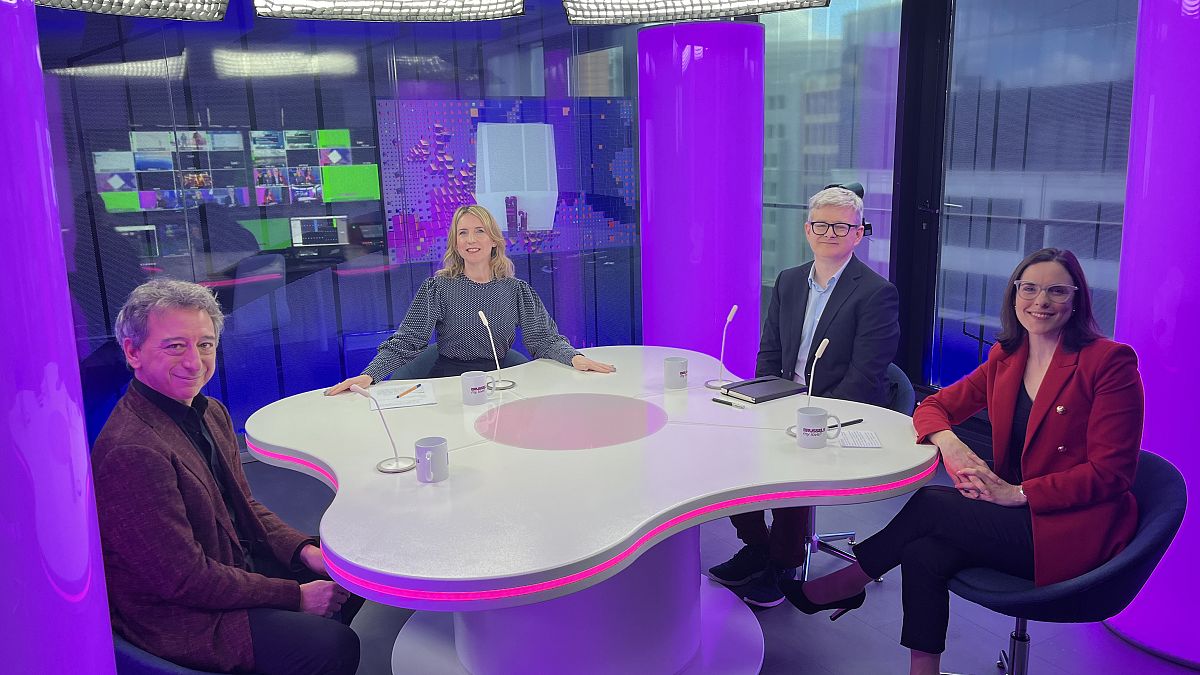The US House of Representatives is expected to vote on sending additional aid to Ukraine and Israel on Saturday evening, in a move that could provide $95bn in critical support to American allies and end months of congressional inaction.
Mike Johnson, the Republican Speaker of the House and ally of Donald Trump, told fellow party members on Wednesday that he would publish draft legislation on three bills with additional military funding for Israel, Taiwan and Ukraine.
House members will have 72 hours to study the legislation, setting the stage for a final vote on all three measures on Saturday evening that will be watched closely by US allies in Europe.
Johnson’s gambit comes at a critical time for Kyiv in its war against Russia’s full-scale invasion, and follows months of lobbying by US allies who have warned that Ukraine’s defences could be overrun by far superior Russian firepower without fresh military aid from Washington.
But the decision to send the legislation to the House floor comes with considerable political risk for Johnson. Rightwing opponents within his party have vowed to eject him as Speaker if he allows a vote on the aid, and Johnson is expected to need Democrats’ support to get the funding passed — and to stay on as Speaker.
Momentum to reintroduce the aid packages picked up after Iran’s weekend attack on Israel, with President Joe Biden calling it a “brazen” and “unprecedented” attack on one of the US’s closest allies in the Middle East.
The possible breakthrough on US funding for its allies follows months of inaction in the Republican-controlled House, which has refused to take up a Senate-approved $95bn national security supplemental aid package that included $60bn in funding for Ukraine, as well as billions of dollars for Israel and Taiwan.
US allies in Europe have been alarmed at the deadlock in Congress over more support for Ukraine, where Russian forces have threatened to gain more territory two years after Vladimir Putin launched the full-scale invasion.
The Russian military has stepped up its bombardment of Ukraine in recent weeks as well, amid fears that Ukraine’s aerial defences are growing weaker.
While the EU has scrambled to put together stop-gap military funding packages in recent months, European diplomats admit they lack the defence capabilities and manufacturing capacities to replace the US.
The frozen funding stream has also spooked some European capitals that fear it is a harbinger for US policy towards Ukraine under a potential Trump presidency, should he win back control of the White House in November’s election.
Jens Stoltenberg, Nato’s secretary-general, said on Wednesday he was “encouraged by indications that the US Congress may take up further aid to Ukraine in the coming days”.
“My message is clear: Send more to Ukraine,” he added.
Johnson’s plan, unveiled on Monday, splits the aid into three separate bills, including a $60.8bn Ukraine aid bill, a $26.4bn measure in support of Israel, and an $8.1bn package to send aid to Taiwan and other countries in the Indo-Pacific intended to deter Chinese aggression.
Johnson has said he will also publish a draft of a fourth bill that would seize Russian assets, impose additional sanctions on Russia, China and Iran, and ban TikTok from app stores unless its Chinese owner divests ownership of the video-sharing platform. A fifth bill would seek to boost security on the US-Mexico border.
But passage of the bills is not guaranteed. Republicans control the House by a tiny margin that will shrink to just one vote on Friday, when Wisconsin Republican Mike Gallagher is expected to step down from the chamber.
The White House and senior Democrats have reserved judgment on Johnson’s plan, saying on Tuesday that they were awaiting more details before taking a position.
Johnson’s leadership has been on shaky ground for weeks, since the firebrand Republican congresswoman Marjorie Taylor Greene threatened to call a vote of no confidence in his speakership. On Tuesday, Thomas Massie, a Republican from Kentucky, said he would join Greene’s effort and called on Johnson to resign.
But Johnson vowed to fight on, telling reporters it was an “absurd notion that someone would bring a vacate motion when we are simply here trying to do our jobs”, He said he considered himself a “wartime Speaker”, adding: “I didn’t anticipate this would be an easy path.”



-700x467.jpg)



























